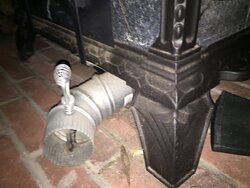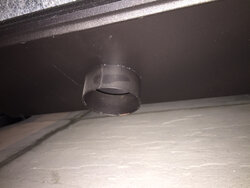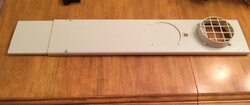Smoked
Feeling the Heat
I use hi temp brake lube on my latches and hinges a couple of times a season but I bet it is graphite anyway so think that is good advice. Also, not sure your model had the suspect hinge pins and the same friction latch that had problems in some of the smaller stoves.
I don't really use the thermometer to get mine going, really only to monitor cruising temps. To get them going, I try to get the firebox raging for a few min and then start backing it down while not losing the secondary flames. There is a pretty decent lag in temp getting through the top stones so I judge the fire early based on what I see in the window more than what the temp is. Like others have said, cruising will normally end up with the primary air fully closed in colder dryer weather. It will take you a little while to get the hang of it but these things are pretty predictable with good dry wood!
I don't really use the thermometer to get mine going, really only to monitor cruising temps. To get them going, I try to get the firebox raging for a few min and then start backing it down while not losing the secondary flames. There is a pretty decent lag in temp getting through the top stones so I judge the fire early based on what I see in the window more than what the temp is. Like others have said, cruising will normally end up with the primary air fully closed in colder dryer weather. It will take you a little while to get the hang of it but these things are pretty predictable with good dry wood!
Last edited by a moderator:





